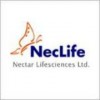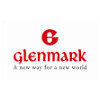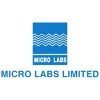Filter interviews by
NecLife Manager Environment Interview Questions, Process, and Tips
NecLife Manager Environment Interview Experiences
1 interview found
I applied via Company Website and was interviewed before Aug 2022. There were 3 interview rounds.

(4 Questions)
- Q1. ZLD & Environment compliances
- Q2. What is ZLD & CTO
- Ans.
ZLD stands for Zero Liquid Discharge and CTO stands for Consent to Operate.
ZLD is a water treatment process where all wastewater is purified and recycled, leaving zero discharge at the end.
CTO is a document issued by pollution control boards to industries allowing them to operate after meeting certain environmental standards.
Both ZLD and CTO are important in ensuring environmental sustainability and compliance with reg
- Q3. What are basis treatment techniques for waste water COD
- Ans.
Basis treatment techniques for wastewater COD include biological treatment, chemical treatment, and physical treatment.
Biological treatment involves using microorganisms to break down organic matter in the wastewater.
Chemical treatment involves adding chemicals to the wastewater to facilitate the removal of COD.
Physical treatment methods include processes like filtration, sedimentation, and adsorption to reduce COD lev...
- Q4. HCOD TREATMENT TECHNIQUES
(6 Questions)
- Q1. What are environment compliances to maintain in industries
- Ans.
Environment compliances in industries include following regulations and guidelines to minimize impact on environment.
Obtaining necessary permits and licenses for operations
Implementing pollution control measures
Proper waste management and disposal practices
Regular monitoring and reporting of emissions and effluents
Compliance with environmental laws and regulations
Implementing sustainable practices to reduce environment
- Q2. What are basis parameters of ZLD as per PPCB.
- Ans.
ZLD parameters as per PPCB include TDS, pH, BOD, COD, and heavy metals.
Total Dissolved Solids (TDS) should be reduced to minimum levels.
pH should be within the permissible range set by PPCB.
Biological Oxygen Demand (BOD) and Chemical Oxygen Demand (COD) levels should be minimized.
Heavy metals such as lead, mercury, and chromium should be effectively removed.
Effluent should meet the standards set by Punjab Pollution Con
- Q3. What’s reverses osmosis.
- Ans.
Reverse osmosis is a water purification process that uses a partially permeable membrane to remove ions, molecules, and larger particles from drinking water.
Reverse osmosis is a water treatment process that uses pressure to force water through a membrane, removing impurities.
It is commonly used in desalination plants to turn seawater into drinking water.
Reverse osmosis systems are also used in households to purify drin...
- Q4. What are trouble shooting in Bio etp
- Ans.
Troubleshooting in Bio ETP involves identifying and resolving issues in the biological effluent treatment process.
Monitor key parameters such as pH, temperature, dissolved oxygen levels, and organic load regularly.
Check for any signs of foaming, odors, or unusual color in the treated water, which may indicate problems with the microbial population.
Inspect mechanical components such as pumps, aerators, and mixers for pr...
- Q5. How do know CTO & CTE of air & water
- Q6. What are parmates in outlet in ETP
- Ans.
Parmates in outlet in ETP are microorganisms that help in breaking down organic matter in the effluent treatment plant.
Parmates are essential for the biological treatment process in ETPs.
They help in breaking down organic pollutants into simpler, less harmful substances.
Examples of parmates include bacteria, fungi, and algae.
Proper maintenance of parmates is crucial for the efficient functioning of ETPs.
Interview Preparation Tips
Top trending discussions






Interview questions from similar companies

Environmental Officer Interview Questions & Answers
Unichem Laboratoriesposted on 25 Feb 2021
Interview Questionnaire
4 Questions
- Q1. ETP MEE & RO PLANT
- Q2. All oprisan dittles
- Q3. Mee plant steam affections
- Ans.
Mee plant steam affections
MEE stands for Mechanical Engineering Equipment.
Steam affections refer to issues with steam systems in the plant.
Common steam affections include leaks, pressure drops, and condensate buildup.
As an Environment Officer, it is important to ensure that steam systems are properly maintained to prevent energy waste and emissions.
Regular inspections and maintenance can help identify and address steam
- Q4. Ro plant traibil sosunting
NecLife Interview FAQs
Tell us how to improve this page.
NecLife Interviews By Designations
- NecLife Assistant Manager Interview Questions
- NecLife Senior Officer Interview Questions
- NecLife Production Chemist Interview Questions
- NecLife Production Officer Interview Questions
- NecLife Research Associate Interview Questions
- NecLife Senior Engineering Manager Interview Questions
- NecLife Accountant Interview Questions
- NecLife Area Sales Manager Interview Questions
- Show more
Interview Questions for Popular Designations
- Environment Health and Safety Officer Interview Questions
- Environmental Engineer Interview Questions
- Environmental Officer Interview Questions
- Environmental Health and Safety Lead Interview Questions
- Environmental Health and Safety Manager Interview Questions
- Assistant Environment Health and Safety Manager Interview Questions
- Environment Executive Interview Questions
- Assistant Manager Environment Interview Questions
- Show more
NecLife Manager Environment Interview Process
based on 1 interview
Interview experience
Interview Questions from Similar Companies
Fast track your campus placements
|
Senior Chemist
112
salaries
| ₹1.5 L/yr - ₹5 L/yr |
|
Officer
88
salaries
| ₹2 L/yr - ₹4.7 L/yr |
|
Senior Officer
86
salaries
| ₹3 L/yr - ₹5.5 L/yr |
|
Executive
81
salaries
| ₹3 L/yr - ₹6.8 L/yr |
|
Senior Executive
57
salaries
| ₹4 L/yr - ₹8.6 L/yr |

Sun Pharmaceutical Industries

DRJ & CO
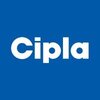
Cipla
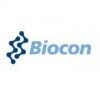
Biocon Limited
- Home >
- Interviews >
- NecLife Interview Questions >
- NecLife Manager Environment Interview Questions
